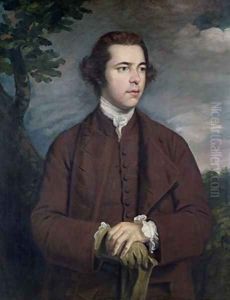Giuseppe Filippo Liberati Marchi Paintings
Giuseppe Filippo Liberati Marchi was an Italian sculptor and architect who made significant contributions to the art world during the 18th century. Born in 1699 in Foligno, a city in the central Italian region of Umbria, Marchi grew up in an era when the Baroque style was transitioning to Rococo, and his works reflect the influences of both these styles. Despite the scarcity of detailed records about his early life, it is known that he was deeply involved in the artistic milieu of his time, receiving his training in Rome, the epicenter of Italian art and culture.
Marchi's career was primarily based in Rome, where he worked on various commissions that showcased his versatility in both sculpture and architecture. He was known for his meticulous attention to detail and the dynamic expression of his sculptures. His architectural works, although fewer in comparison to his sculptures, demonstrate a keen understanding of space and form, blending functionality with aesthetic appeal. Among his notable contributions are the designs and decorations of several Roman churches and public buildings, reflecting the grandeur and elegance of 18th-century Roman architecture.
Despite his achievements, Giuseppe Filippo Liberati Marchi did not gain the same level of fame as some of his contemporaries. However, his work has been appreciated for its craftsmanship and the subtle blend of Baroque intensity with Rococo's lighter, more graceful touches. Marchi's sculptures, often characterized by their emotional depth and technical proficiency, have been studied for their contribution to the development of late Baroque and early Rococo art in Italy.
Giuseppe Filippo Liberati Marchi passed away in 1769, leaving behind a legacy that, while not as widely recognized as that of some of his peers, is valued for its artistic merit and historical significance. His works continue to be studied by art historians and appreciated by art lovers, offering insights into the transitional period of Italian art during the 18th century.
